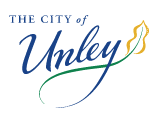Super Tuesday Cyclist Count
Super Tuesday is a nation-wide count of commuting cyclists which takes place for two hours on the first Tuesday morning of March. Bike Adelaide takes part in this important annual event by helping to count riders at strategic intersections throughout Adelaide.
Super Tuesday volunteers have found this a rewarding experience, learning about cycling movements and contributing to real, hard data about cycling levels.
Bike Adelaide works in partnership with:




2022 General Commentary
Introduction
The Super Tuesday count is an annual count of cyclists and pedestrians undertaken as a partnership between the Cities of Adelaide, Norwood, Payenham and St Peters and Unley, Bike Adelaide and Walking SA.
Super Tuesday is a national count of cyclists that has been undertaken since 2009. While five volunteers took part in the Adelaide count that year, it only seriously began in Adelaide from 2010, when the City of Adelaide became involved. This year 57 locations were counted, one higher than the previous record of 56, recorded in 2020. (The total number counted in 2021 was probably higher, as there were also counts undertaken by the Melbourne-based Bicycle Network, particularly in Unley. This year the Unley counts were undertaken by the Unley Bicycle Users Group and Bike Adelaide.)
The counting of pedestrians began in 2019 and has grown from 2 locations in that year to 38 in 2021 and 2022. This year there were more suburban locations count, at the expense of the CBD locations. Volunteers were not asked to count at CBD locations this year, because:
(1) there are typically so many pedestrians in CBD locations that attempts to count both pedestrians and cyclists render the counts unreliable,
(2) counts of pedestrians in the city really measure the levels of activity in the CBD rather than the proclivity to walk. Many of those counted, for example may be walking from the nearest car park or bus/tram stop.
To view intersection counts for 2022 click the map below.
Levels of cycling
This year’s count saw a dramatic decline in the number of cyclists counted. Totalling the numbers of cyclists counted at the 49 locations where counts were undertaken in both 2021 and 2022, suggests a decline of 24% – by far the biggest decline ever recorded.
The weather was similar on both Super Tuesdays. The most obvious explanation for the decline was the reduction in people in Adelaide’s CBD, particularly working and studying. The Super Tuesday counts have traditionally been designed to measure commuting by cycling to the CBD and so are very sensitive to activity levels in the CBD.
The lifting of border restrictions in November 2021 resulted in a huge increase in the number of Covid cases from December onward, with a consequent reintroduction of physical isolation measures by the government, employers and individuals. This include work from home mandates and the strengthening of density requirements.
The large increase in Covid cases in January caused the State Government to place a limit of 50% on the proportion of public servants allowed to work in the office. (In fact the Treasurer announced the lifting of this limit on the day of the count.) The State Government is by far the biggest employer in the CBD and it can be reasonably assumed that policies and practices adopted by the State government regarding working from home would be echoed if not exceeded by other large white-collar employers.
We suspect that, if anything, the impact on student numbers would be even stronger. The move to on-line teaching, which was gathering strength before 2020, was dramatically strengthened by the pandemic, with all three universities having policies down of recording lectures, with many tutorials and seminars also being offered on-line as well. In addition overseas students have not been allowed to enter the country from the start of the pandemic until very recently.
A recent report to the Adelaide City Council gives some indication of the impact of the pandemic on City activity. The authors use Google GPS data that measures the numbers accessing the City from a pre-pandemic baseline.
In most cases the graphs indicate a reduction in activity over the months following November 2021, which itself experienced levels much lower than pre-pandemic.
Given the assumption that the main explanation for the decline in cycling is simply the decline in CBD activity due to Covid, it is interesting to note that there is not a significant difference between the locations in the Adelaide City Council compared with the suburban locations. The City of Adelaide locations saw a decline of 25%, compared with a decline of 23% in the suburban council areas. Note of course, the overwhelming majority of cyclists counted in the suburbs would be heading into the CBD, especially as many locations are on the boundary with the City of Adelaide. Also, in a number of cases the CBD counts were mitigated by a relatively high number of people riding “counterflow”, that is away from the City.
In contrast to the previous year, when female cycling increase, this year female cycling fell by more than male cycling. The decline was 29%, compared with 24% for males.
Nevertheless, the proportion of cyclists who were female was 25.5%, which is about the same as in previous counts.
Pedestrian levels
The number of pedestrians counted also fell, but by a much
lower 9%. This follows a 9% increase in
2021 over 2020. 25 of the 28 locations
counted in both years saw falls.
As discussed above, with a few exceptions in the southern
half of the square mile and one along the Torrens, the pedestrian locations did
not include those in the City of Adelaide.
While the pedestrian numbers have been impacted by reduced commuting
into the City, the effect was likely to have been muted by the number of
recreational walkers.
Impact of electric scooters
Another possible impact on walking and cycling is that of electric scooters. Rental scooters are being trialled in the Adelaide, NPSP and Unley council areas, and privately-owned electric scooters are increasingly popular. People may be using these rather than cycling, or more particularly, walking.
Our volunteer counters have been told not to count users of electric scooters with pedestrians or cyclists. (They of course can count them, but if so, they are asked to separately identify them.) Electric scooters are not included as part of the count because we do not regard them as “active” transport, in that no effort is used to propel them.
E-bikes on the other hand, are counted, for two reasons:
1. as pedal-assist, legal versions at least require that cyclists to pedal the bike, and so have to exercise to some extent, and
2. it is not always easy to distinguish e-bikes from other bikes.
Change over time
The graph below indicates the percentage change in numbers counted from the previous year. In each case the numbers include only those locations where there were counts in both the current and previous year.

Quite strong increases in the first few years were followed by a big fall in 2016 and much more modest increases until the pandemic hit in early 2020. Numbers for the intersections counted in both 2019 and 2022 suggest a fall of 32% over the three years since then. Obviously, the weather can impact on the amount of cycling in any one year. Fortunately there have been no rainy days, but 2019 was noted for being unusually cold.
(It is interesting to note that if 2010 is used as a base, the application of the percentage changes since then suggest that cycling had increased by 43% by 2019, but changes since then bring the figure back to a 10% increase on the 2010 figure.)
2022 General Commentary-City of Norwood, Payneham and St Peters
Introduction
This year 19 locations were counted in the NPSP council area, the same number as in 2021.
While some high-volume locations are counted every year, others are tested less regularly, sometimes once only, if numbers are very low. This year two locations were counted for the first time:
· Magill Rd/ Ashbrook Avenue (a Bike Direct route, and possible location of a pedestrian crossing)
· Payneham Road/ Harrow Road (the site of left turn on red signage for motorists).
Neither reported high cycling numbers (both 39), and in the case of Payneham Road and Harrow Road, pedestrian numbers were well below the threshold established by the State government for left turn on red signage.
Levels of Cycling
This year’s count saw a significant decline in the number of cyclists counted. Totalling the numbers of cyclists counted at the 17 locations where counts were undertaken in both 2021 and 2022, suggests a decline of 12% – which while the highest decline ever recorded, was about half that of the metro-wide count as a whole.
As we note in the general discussion, we suspect the decline is mainly due to the decline in activity in the CBD, which is the dominant magnet for people riding from 7am to 9am on a weekday. While it is expected that counts in suburban locations would see less of a decline than those in the City itself, the 12% decline is quite a bit less than the 23% decline for suburban counts as a whole.
Female Cycling
This year female cycling fell by more than male cycling. The decline was 18%, resulting in only 18% of the total counted being female, compared with 25.5% for all locations.
Pedestrian levels
The number of pedestrians counted fell 11% when we look only at locations counted in both 2021 and 2022. This follows a 23% increase in 2021 over 2020. Nine of the twelve locations counted in both years saw falls.

